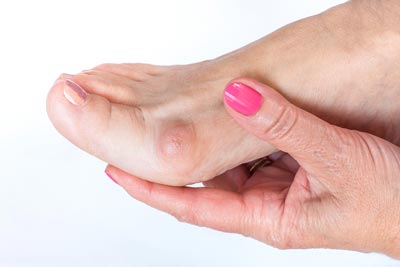A Step-by-Step Approach to Treatment For Plantar Warts
Are you dealing with treatment for plantar warts? You don’t have to suffer through them—there are treatments available for DIYers who want to rid their feet of this pesky problem. We know that understanding and utilizing the proper treatment can be a bit of a mystery though and so, in this blog post, we’ll break it down into easy steps so you can understand the best way to diagnose and treat your own plantar warts. Learn more about how to effectively tackle these persistent skin interruptions in an informative yet manageable way: read on!

Treatment For Plantar Warts
Overview of Plantar Warts and Symptoms
Plantar warts are a common skin condition caused by a virus called human papillomavirus (HPV). These warts are found on the soles of the feet and can be painful and unsightly. The virus enters the skin via tiny cuts or scrapes on the bottom of the foot and can lead to the development of wart growths. Symptoms of plantar warts include small, rough growths on the sole of the foot, thickened skin over the wart, and pain or tenderness when standing or walking. While plantar warts can go away on their own, treatment options are available for those who want to speed up the healing process. It’s important to take care of these warts to avoid further complications such as bleeding or infections.
Different Treatment Options for Plantar Warts
Plantar warts are a common foot problem that can be both uncomfortable and unsightly. Fortunately, there are several treatment options available for those looking to rid themselves of these pesky growths. One possible option is cryotherapy, which involves applying liquid nitrogen to freeze and destroy the wart tissue. Another option is the use of topical creams containing salicylic acid, which work to dissolve the wart over time. In more severe cases, laser therapy may be recommended to remove the wart completely. With the many effective treatment options available, anyone suffering from plantar warts can feel confident in seeking relief and restoring their foot health.
Self-Treating Your Plantar Warts at Home – Step-by-Step Guide
If you’re dealing with plantar warts, it’s understandable that you might want to try treating them at home before seeking medical attention. The good news is that with the right approach, it is possible to effectively self-treat plantar warts at home. However, it’s important to proceed with caution and follow a step-by-step guide to ensure that you’re not doing more harm than good. Some effective treatments may include using over-the-counter medications or natural remedies, such as duct tape or apple cider vinegar. While these methods may work for some, it’s important to remember that plantar warts can be stubborn and may require more advanced treatment from a medical professional.
What to Expect After Treatment is Complete
Completing treatment for any illness or condition can be a major milestone in a person’s life. The end of treatment typically signals a time of change and adjustment, as the patient moves from a period of intense focus on their health to a new chapter of their life. For those who have completed cancer treatment, for example, this can be an emotional time filled with a mix of relief and uncertainty. Patients may have concerns about potential side effects of treatment, fear of recurrence, or adjusting to a new normal. However, it is important to remember that every patient’s experience is unique, and there are resources available to help manage these feelings and navigate the post-treatment period successfully.

Plantar Warts
Benefits of Seeking Professional Help For Plantar Wart Treatments
Plantar warts can be frustrating and uncomfortable. While it may be tempting to turn to over-the-counter remedies or home remedies, seeking professional help for plantar wart treatments can provide significant benefits. A podiatrist or dermatologist can accurately diagnose the wart and offer targeted treatment options that are often more effective than at-home remedies. Additionally, they can monitor the progress of the treatment and provide guidance on preventing future warts. Seeking professional help can also prevent the spread of warts to other areas of the foot or other people.
Treating plantar warts at home can be a safe and effective way to get rid of them, but should not be done without research and caution. Self-treatment options are limited to topical treatments and may not be as successful as professional treatment. Professional treatment often results in faster recovery, fewer recurrences, and less discomfort for the person being treated. Proper diagnosis and treatment of plantar warts can help speed up the healing process, prevent the spreading of the virus, alleviate pain, and restore normalcy in one’s day-to-day life.
Flagstaff Foot Doctors: Anthony Rosales DPM
https://www.google.com/maps?cid=8835841318590452161
421 N Humphreys St, Flagstaff, AZ 86001, United States
(928) 774-4825
https://flagstafffootandankle.com/
